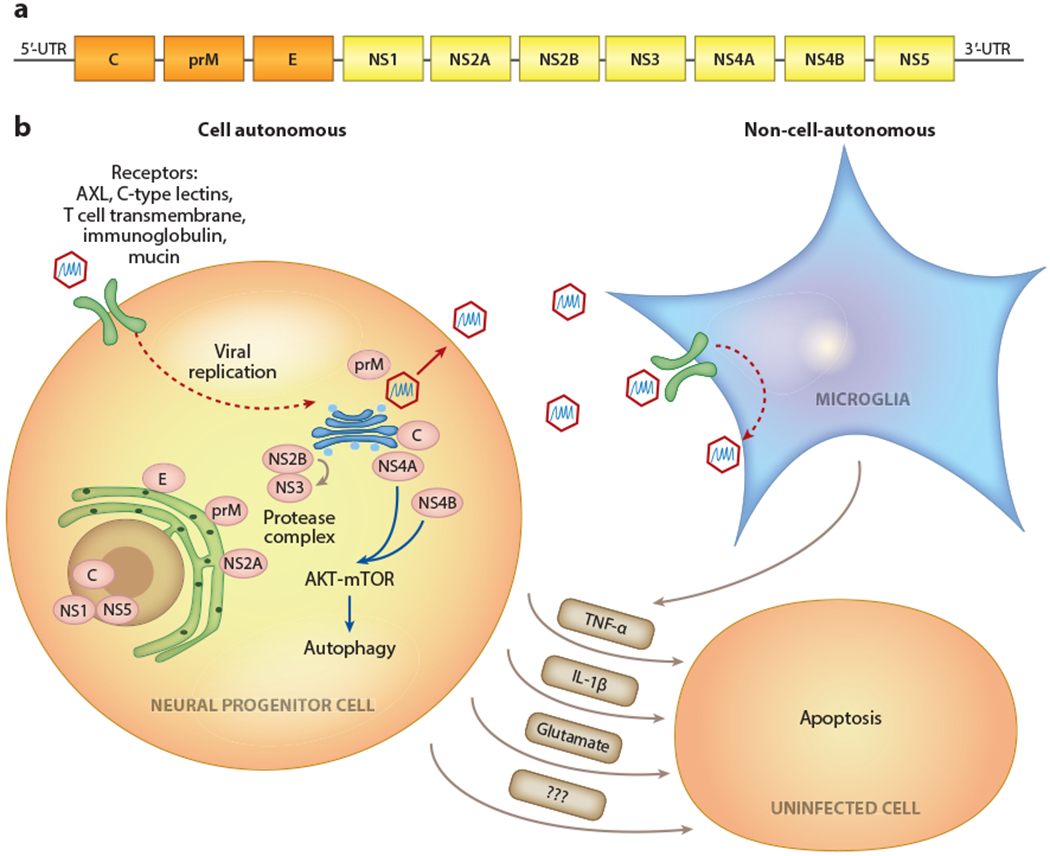Figure 1.

Cell-autonomous and non-cell-autonomous effects of ZIKV infection. (a) The ZIKV genome encodes three structural proteins (C,E, and prM; orange) and seven nonstructural proteins (NS1, NS2A, NS2B, NS3, NS4A, NS4B, and NS5;yellow). (b) At the subcellular localization of ZIKV proteins and associated organelles, the infection of neural progenitor cells can lead to decreased proliferation and apoptosis. Microglia and astrocytes can be productive viral reservoirs but are less susceptible to infection-mediated cell death. Non-cell-autonomous toxic factors released from infected cells can lead to bystander cell death in uninfected populations. Abbreviations: AKT, protein kinase B; C, capsid; E, envelope; IL-1β, interleukin 1 β; mTOR, mammalian target of rapamycin; prM, precursor membrane; TNF-α, tumor necrosis factor α; ZIKV, Zika virus.
